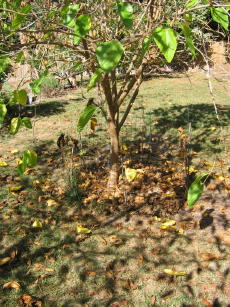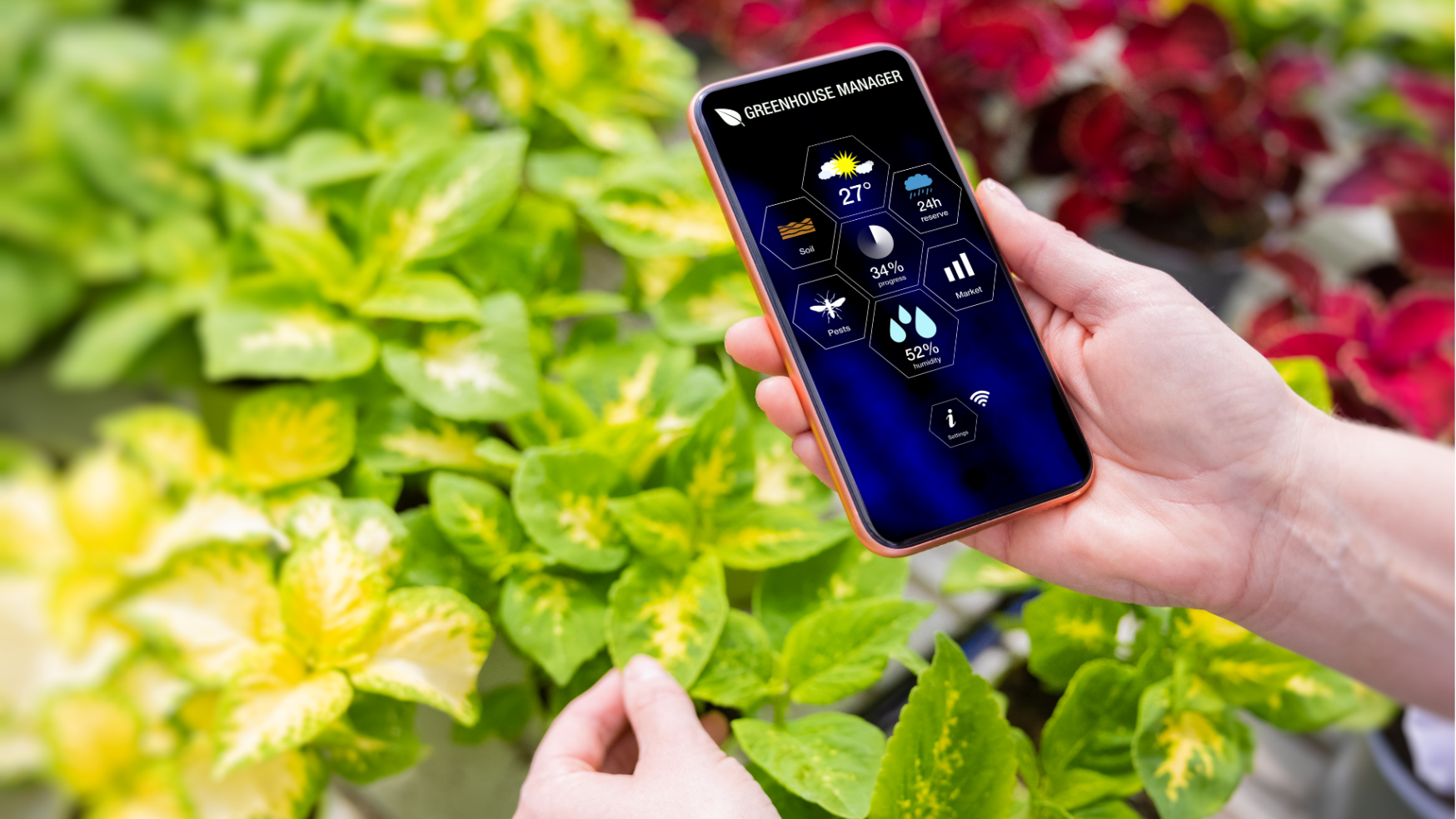Location: Donvale, Victoria
Maria has been a long time advocate of gardening sustainably. Her garden at her previous home won the City of Manningham’s sustainability award 10 years ago! Scroll down to take a tour of Maria’s marvellous garden.
 Compost Bin
Compost Bin
This is one of three that we keep. One we use to add scraps, leaves etc into and when it gets close to full (which it never actually does) we declare it closed until further notice. The contents are then allowed to rest until they are composted. In the meantime, we work on the second bin, which gets added to with the daily scraps. The “working bin” needs a bit more attention in its formative stages. We make sure we aerate it occasionally with a long handled garden fork, by just turning over the contents so that the bits at the top get mixed through into the warmer sections of the active decomposition. If it’s looking too soggy we add handfuls of dried autumn leaves which we keep handy; or shredded up newspaper if we have no leaves. If it’s looking too dry or nothing much is happening when we go to turn it over, we add a little bit of water or even a handful of blood and bone to activate things. This is rarely needed though.
The third bin? It’s up near the chicken coop so that when we clean out the soiled straw or wood shavings which are used on the floor of the coop, this lovely stuff can sit in the bin till we’re ready to use it. It doesn’t break down completely so it’s more as a mulch.


The Pumpkin
Out of the compost bin comes more than just compost. Lots of seedlings pop up after the compost has been spread around the garden, many of which I leave. Fantastic crops of tomatoes and even this lovely Japanese Pumpkin have become part of our annual harvest – all from the compost bins.


Elise with Lucy
Elise is the girl and Lucy is her pet Isa Brown chook, one of the more tame varieties. She’ll follow us around the garden and is quite happy to be picked up (and even trained to jump through hoops!)


Chooks in the Vegie Garden
Chooks and vegies are not always a happy combination, so the vegie areas are fenced off with low mesh fencing. But at the end of the season, when we need to clear out the patch of any weeds or left-over insects, the chooks are allowed in and do a great job scratching over it all.


Basil and Tomatoes
Apparently, they make wonderful companion plants. We like to keep some close to the kitchen door for the evening salad. The Tommy Toe in the background was a compost seedling and is still (in April) giving us lots of tasty cherry-sized tomatoes.


Water Tank No.2
When we landscaped our front garden with indigenous plants, I insisted that we install a second water tank near the area: after all, why go to all the effort of lots of new plants if you can’t be sure of watering them over the summer. Well, the tank filled many times over but hardly a drop was needed in the indigenous garden. Instead, the pump attached allowed us to use this saved rainwater throughout the vegie gardens over summer. Over winter, the water was pumped into the nearby laundry area using a hose, to use in the washing machine.


Banksia
The indigenous garden was planted out using only tube stock, just under a year ago. With no maintenance or watering throughout summer (except for the occasional weeding) the tube stock has grown well.


Correa reflexa
Can’t beat this indigenous variety for looking good with no care at all. This was only planted a year ago and I have already gone through with the hedge clippers so that the lovely flowers are more visible, since they are borne below the top stems. Some gorgeous little native nectar-feeding birds are often seen flitting through.


Banksia no. 2
This is another of the group of banksia which were planted to hide an adjoining brick wall. At this rate, they will soon be big enough to provide their own wall of colour.


Dianella longifolia
Sometimes it’s hard to know how close to plant groups of plants together because they look so small as tubes. This lot of Dianella are clumping up beautifully.


Lomandra & Correa
This lot out front were lucky if they got a bucket of shower water occasionally over the drier months. The soil is shallow and not of any particular quality yet they’ve remained green and lush. The clumps of indig. Poa grasses were clipped back about 6 weeks ago because they were looking very yellow. Despite the lack of rain since then, the green is coming back through them.


The Agi Pipe
We thought we’d try a different method for watering our fruit trees last summer. In spring, when all the fresh mulching and manuring was happening, we dug short lengths of the perforated Agi-pipe around the perimeter of our trees, intending to use these to direct water straight to the root system, rather than rely on the water getting through from the top down.


The Chook Shed
As much as I love having the chooks free-ranging all over the place, there are certain times of the year when the garden is better off without them scratching out young and tender seedlings. This is when they stay in their run attached to the coop. We have to make sure they get plenty of greens when we keep them enclosed.


Coir Pots
We experimented with using coir pots this year for growing seeds in before transplanting. Some tomatoes were grown this way and it was interesting to note how the root system managed to get through the only partially decomposed pot after we pulled up the finished plants.


The Chooks
Fantastic recyclers that they are, they give us delicious eggs and get rid of food wastes beautifully, not to mention the wonderful fertiliser which I’m sure was what contributed to the fabulous crop of passionfruits and berries we got this season.


Pea Straw
Baled up at the ready for when we next put mulch down. I tend to let the mulch thin out over autumn and winter and then top it all up again in readiness for the summer season.


Autumn leaves
The mulberry tree gets to use its own fallen leaves as mulch.


Lavender plants
If an ornamental plant needs too much water then it has no place in my garden. Most of the varieties of lavender grown have survived, even if they did need a good cut back to avoid straggly habits.


Water Tank No. 1
Our first water tank installed was of 1700 litres capacity. It seemed like heaps of water at the time but with a big garden, it would quickly empty. Now, whenever anybody asks we about water tanks I advise them to get the biggest they can afford and that they have the space for (and to get the plumber to connect it to as many down-pipes as possible).
Related Articles:
Mastering Essential Winter Gardening Skills
As the cold of winter sweep across the landscape, many gardeners in the South of Australia retreat indoors, awaiting the warmth of spring to resume…
Citizen Science: A Pathway to Gardening Success and Biodiversity Conservation
In recent years, the realm of science has experienced a remarkable transformation, one that invites people from all walks of life to participate…


